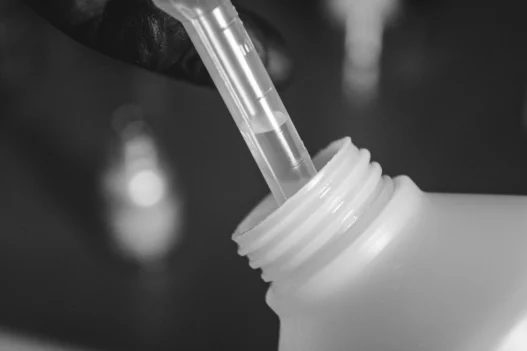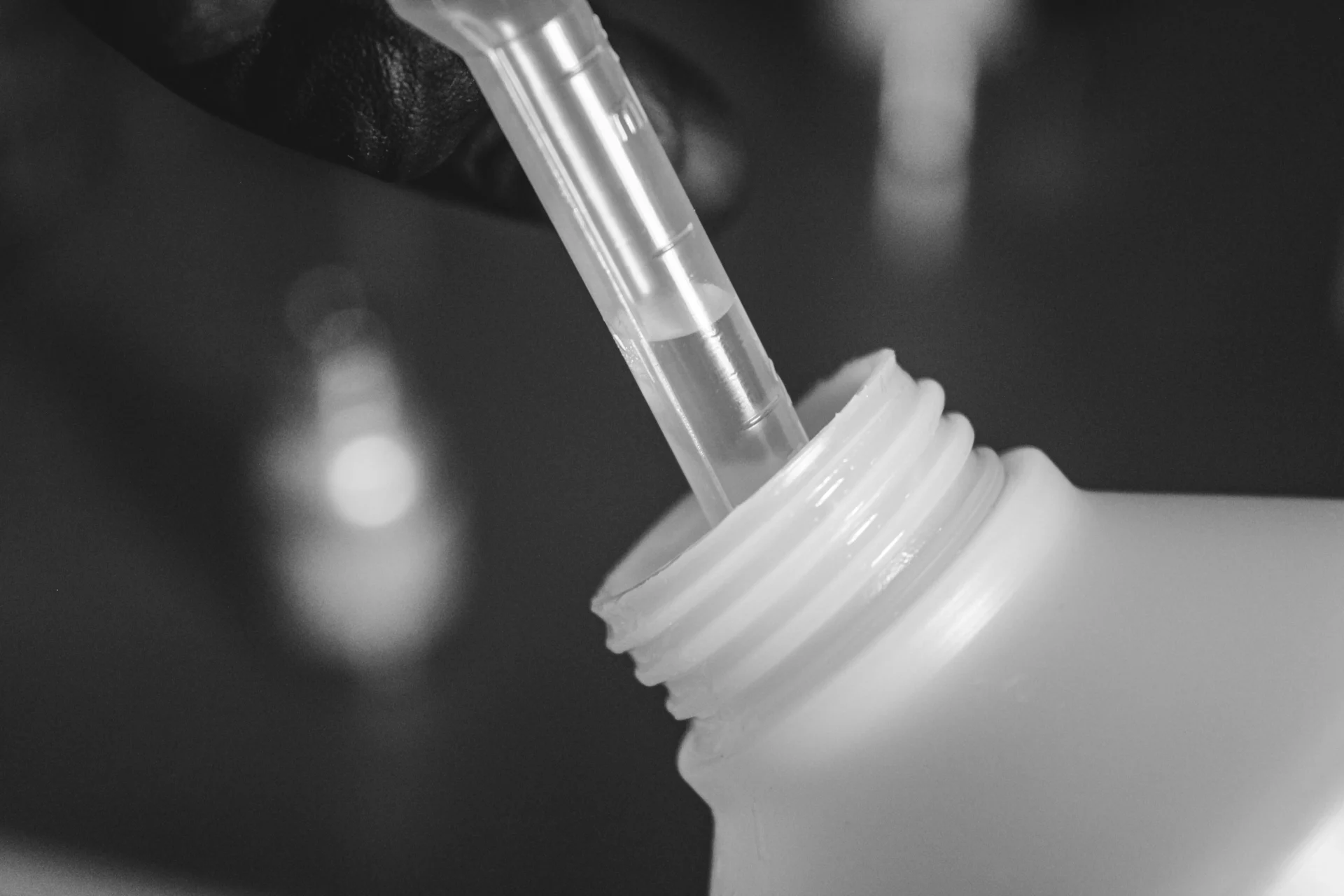2-Methyl-2-butanol, also known as tert-amyl alcohol, holds relevance to everyday life due to its practical applications in various industries. This compound is commonly utilized as a solvent in the production of coatings, paints, and inks. Additionally, 2-Methyl-2-butanol is commonly employed in the manufacturing of fragrances and flavoring agents, contributing to the scents and tastes of various household products. Overall, the versatile nature of this compound plays a crucial role in enhancing the quality and functionality of numerous consumer goods utilized on a daily basis.
Table of Contents:
- 💡 Commercial Applications
- ⚗️ Chemical & Physical Properties
- 🏭 Production & Procurement
- ⚠️ Safety Considerations
- 🔬 Potential Research Directions
- 🧪 Related Compounds
💡 Commercial Applications
2-Methyl-2-butanol, also known as tert-amyl alcohol, finds various commercial and industrial applications. This compound is commonly used as a solvent in coatings, paints, and inks due to its low toxicity and good solvency properties. It is also utilized in the synthesis of fragrances, plasticizers, and other chemicals.
In addition to its commercial and industrial applications, 2-Methyl-2-butanol has also found use in the pharmaceutical industry. It is utilized in the synthesis of certain medications and drugs, such as muscle relaxants and anesthetics. Due to its ability to act as a central nervous system depressant, it is important in the development of certain pharmaceutical products.
Overall, 2-Methyl-2-butanol plays a significant role in multiple industries due to its versatile properties. Its applications range from use as a solvent in coatings and paints to its role in the synthesis of pharmaceuticals. The compound’s unique properties make it a valuable ingredient in various commercial, industrial, and medical products.
⚗️ Chemical & Physical Properties
2-Methyl-2-butanol is a colorless liquid with a characteristic minty odor. It is commonly used as a solvent or in the production of fragrances and flavorings.
The molar mass of 2-Methyl-2-butanol is approximately 88.15 g/mol, and its density is about 0.81 g/cm³. This makes it comparable in molar mass and density to common food items such as sucrose (table sugar) and water.
2-Methyl-2-butanol has a melting point of -108 °C and a boiling point of 100-101 °C. In comparison, common food items like butter and sugar have higher melting points and lower boiling points.
2-Methyl-2-butanol is slightly soluble in water and has a low viscosity. This differs from common food items like salt and honey, which have high solubility in water and high viscosity, respectively.
🏭 Production & Procurement
2-Methyl-2-butanol, also known as tert-amyl alcohol, is primarily produced through the hydration of tert-amylene. This process involves the addition of water to tert-amylene, leading to the formation of 2-Methyl-2-butanol as the main product. The reaction is typically carried out in the presence of an acid catalyst, such as sulfuric acid, at elevated temperatures.
2-Methyl-2-butanol can be procured from chemical suppliers who produce and distribute this compound for various industrial applications. It is typically transported in bulk containers, such as drums or tankers, to facilities where it will be used or further processed. The compound is relatively stable and non-reactive under normal conditions, making it suitable for storage and transportation.
Due to its low solubility in water and relatively low vapor pressure, 2-Methyl-2-butanol is not considered highly volatile or hazardous during transportation. However, standard safety precautions should still be observed to prevent exposure and accidental release. When procuring and transporting this compound, it is important to ensure compliance with regulatory requirements and guidelines to minimize risks and ensure safe handling practices.
⚠️ Safety Considerations
Safety considerations for 2-Methyl-2-butanol are important due to its potential hazards. When handling this compound, it is crucial to wear appropriate personal protective equipment, such as gloves, safety glasses, and a lab coat, to prevent skin contact or inhalation of vapors. Additionally, it should be stored in a cool, well-ventilated area away from sources of ignition to avoid fire or explosion risks. Proper handling practices should be followed to minimize the chances of accidents or exposure.
Hazard statements for 2-Methyl-2-butanol include “May cause drowsiness or dizziness” and “Harmful if swallowed, inhaled, or in contact with skin.” These statements indicate the potential risks associated with this compound, emphasizing the importance of using caution when working with it. Individuals handling 2-Methyl-2-butanol should be aware of these hazards and take appropriate measures to protect themselves from harm.
Precautionary statements for 2-Methyl-2-butanol recommend wearing protective gloves and eye/face protection, as well as avoiding breathing in vapors or mists. It is advised to use this compound in a well-ventilated area and to keep it tightly closed when not in use. In case of accidental exposure, medical advice should be sought immediately, and contaminated clothing should be removed and washed before reuse. Following these precautionary statements can help minimize the risks associated with handling 2-Methyl-2-butanol.
🔬 Potential Research Directions
One potential research direction for 2-Methyl-2-butanol lies in its use as a solvent in various chemical reactions. Studies could investigate the efficiency and selectivity of this compound in different types of reactions, as well as its compatibility with other reagents.
Another area of interest could be exploring the environmental impact of 2-Methyl-2-butanol. Research could focus on its biodegradability and toxicity to determine its potential effects on ecosystems. Additionally, studies could investigate ways to reduce its environmental footprint through the development of greener synthesis methods or the use of alternative solvents.
🧪 Related Compounds
One similar compound to 2-Methyl-2-butanol is 3-Methyl-2-butanol. This compound has the same molecular formula as 2-Methyl-2-butanol, C5H12O, but differs in the arrangement of atoms. 3-Methyl-2-butanol has a methyl group attached to the third carbon atom in the carbon chain, while 2-Methyl-2-butanol has a methyl group attached to the second carbon atom.
Another similar compound to 2-Methyl-2-butanol is 2-Methyl-1-butanol. This compound shares the same molecular formula, C5H12O, with 2-Methyl-2-butanol, but has a different structural isomer. In 2-Methyl-1-butanol, the methyl group is attached to the first carbon atom in the carbon chain, leading to a different arrangement of atoms compared to 2-Methyl-2-butanol.
One more similar compound to 2-Methyl-2-butanol is 2-Ethyl-1-propanol. This compound also has the molecular formula C5H12O, but contains different functional groups than 2-Methyl-2-butanol. In 2-Ethyl-1-propanol, there is an ethyl group attached to the second carbon atom in the carbon chain, resulting in a distinct molecular structure from 2-Methyl-2-butanol.









